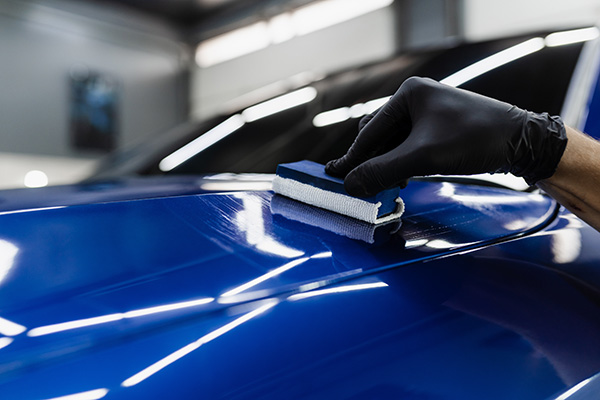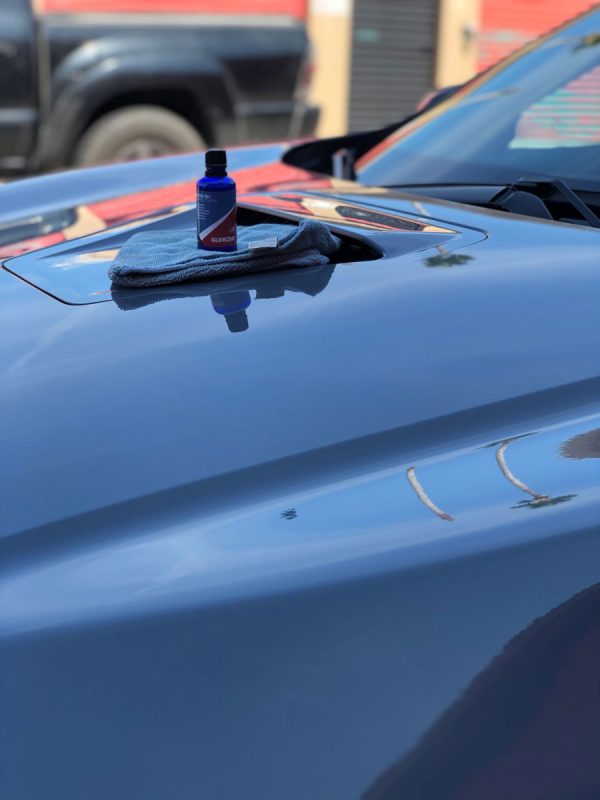Just How Ceramic Coating Can Shield Your Vehicle from Environmental Damages
Just How Ceramic Coating Can Shield Your Vehicle from Environmental Damages
Blog Article
The Importance of Ceramic Coating: Shielding Your Car's Exterior With Accuracy
In an age where preserving the useful and aesthetic stability of your vehicle is extremely important, ceramic coating emerges as a critical option. This protective layer not just guards versus ecological misfortunes yet likewise elevates the aesthetic charm of your car. With its special bonding residential or commercial properties, ceramic finish supplies a level of defense that much goes beyond typical waxing techniques. Exactly how exactly does it attain such remarkable results? As we discover the subtleties of its application and contrast it to various other choices, one can not help but ask yourself about the specifics that make this technology vital for modern-day auto care.
Benefits of Ceramic Coating
When it comes to preserving a cars and truck's aesthetic appeal, ceramic covering offers considerable benefits. By forming a semi-permanent bond with the automobile's paint, ceramic coatings efficiently prevent oxidation and fading, making certain that the automobile maintains a shiny, showroom-like surface for an extensive duration.
In enhancement to its protective top qualities, ceramic finish uses amazing hydrophobic residential properties, triggering water and various other liquids to bead off easily. This feature streamlines the cleaning procedure, as dust and particles are less most likely to comply with the surface area, decreasing the regularity and effort needed for maintenance. In addition, the finishing's resistance to chemical discolorations from acidic pollutants like bird droppings and tree sap is another notable advantage, reducing possible paint damage.
Ceramic finishings also improve scrape resistance, providing a layer that can take in small abrasions and swirl marks. This attribute is especially beneficial in preserving an immaculate surface, decreasing the chance of noticeable imperfections and protecting the stability of the car's paintwork gradually.

Just How Ceramic Covering Works
Recognizing the technicians behind ceramic coating reveals its effectiveness as a protective option for automobiles. Ceramic layers are essentially liquid polymer applications that chemically bond with an automobile's manufacturing facility paint, producing a safety layer. This layer functions as an obstacle versus environmental pollutants such as gunk, dust, and ultraviolet rays, which can weaken a vehicle's exterior over time. The key component in ceramic covering is silicon dioxide (SiO2), which originates from quartz crystals and is recognized for its exceptional hardness and durability.
Application of ceramic coating entails a careful process. The vehicle's surface area should be extensively cleaned up and decontaminated to make certain ideal attachment. When used, the fluid polymer forms a semi-permanent bond with the paint, setting into a clear, resilient guard. This shield boosts the cars and truck's gloss and hydrophobic residential properties, helping with easier cleansing by causing water and pollutants to bead and slide off easily.
Moreover, the finishing's molecular framework offers resistance to small scratches and chemical spots. Unlike waxes or sealers that rest on top of the paint, ceramic coverings incorporate with the surface area, offering resilient defense. This combination is essential to its performance, ensuring the car's coating continues to be excellent for many years.
Comparing Ceramic Coating to Alternatives
In the realm of automobile security, ceramic finishing stands as a powerful choice when contrasted to standard choices such as waxes and sealers. While waxes use a momentary shiny surface, normally lasting just a couple of weeks to months, ceramic finishings offer a longer-lasting service, frequently enduring for years. This resilience is attributed to the chemical bonding that occurs when ceramic layers are used, developing a solid layer that is resistant to ecological dangers.
Contrastingly, sealants, although more resistant than waxes, still disappoint the durable defense used by ceramic finishings. Sealants can usually last for as much as a year, offering a synthetic guard against certain components. Nevertheless, they lack the read the full info here premium hydrophobic properties and UV defense that ceramic finishings deliver.
Moreover, ceramic layers provide enhanced scrape resistance, which neither waxes nor sealers can effectively match (ceramic coating). like it This is specifically useful in maintaining a car's excellent look. Furthermore, ceramic coatings simplify upkeep efforts by decreasing the adherence of dirt and crud, thus promoting simpler cleansing. In recap, while conventional waxes and sealers offer fundamental defense, ceramic coatings provide a thorough, long-term option that significantly preserves the automobile and boosts's exterior surface.
Application Refine Described
Using ceramic layer to a car needs a careful process to make sure ideal results and sturdiness. The preliminary step includes thoroughly cleaning the vehicle's surface to remove dust, oil, and previous waxes. This is vital for making certain the layer sticks appropriately. A pH-neutral shampoo and a clay bar treatment are often made use of to attain an excellent surface. Once cleaned, the lorry is dried out and polished to eliminate any kind of flaws, as any existing swirls or scrapes can come to be much more pronounced after the coating is used.
Complying with surface area preparation, the application of the ceramic coating starts. The coating is commonly applied in a climate-controlled setting to avoid dirt particles from deciding on the freshly cleaned up surface. Utilizing an applicator pad, the ceramic coating is applied in tiny sections to make sure also protection. It is essential to comply with the supplier's guidelines relating to the appropriate curing time and application density.
After application, the layer requires a specific curing duration, during which the car needs to be protected from water and contaminants. This treating procedure can differ relying on the product but typically varies from 24 to two days. Inevitably, this detailed process is pivotal in accomplishing a durable and shiny coating.
Upkeep Tips for Long Life
To maintain the longevity of a ceramic layer, adherence to a self-displined upkeep routine is important. Avoid automated auto cleans, as their severe brushes can original site compromise the coating's honesty.
Post-wash, drying the vehicle with a tidy microfiber towel stops water areas that may weaken the finish in time. Additionally, use a ceramic finish booster every few months. These boosters enhance the hydrophobic homes and enhance the layer's protective capabilities, guaranteeing it stays reliable against contaminants.
Maintain in mind that car park places play an essential duty in maintenance. ceramic coating. Whenever feasible, park in shaded areas to minimize UV exposure, which can progressively deteriorate the finish. For long-term storage space, consider making use of an automobile cover for included security versus environmental components
Final Thought
To conclude, ceramic finishing functions as an important safety layer for car outsides, offering resilient protection against environmental variables such as uv, dirt, and gunk rays. By developing a semi-permanent bond with the paint, it boosts visual appeal while protecting the car's value. Its hydrophobic residential or commercial properties assist in easier maintenance, differentiating it from different safety methods. Understanding the application process and adhering to upkeep referrals are essential for optimizing the long life and effectiveness of ceramic covering.
When it comes to protecting a cars and truck's aesthetic appeal, ceramic covering offers substantial benefits. By developing a semi-permanent bond with the car's paint, ceramic finishings efficiently prevent oxidation and fading, ensuring that the auto keeps a glossy, showroom-like finish for an extensive duration. Ceramic coverings are essentially fluid polymer applications that chemically bond with an automobile's factory paint, developing a safety layer. In summary, while typical waxes and sealants offer standard defense, ceramic finishes provide a detailed, long-term remedy that substantially improves and maintains the automobile's outside finish.

Report this page